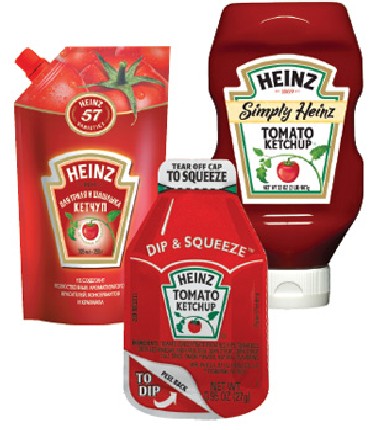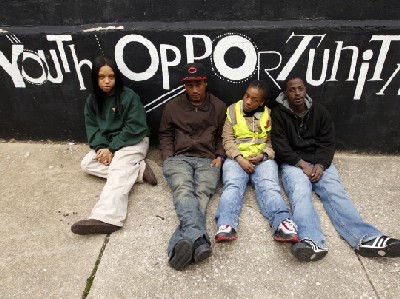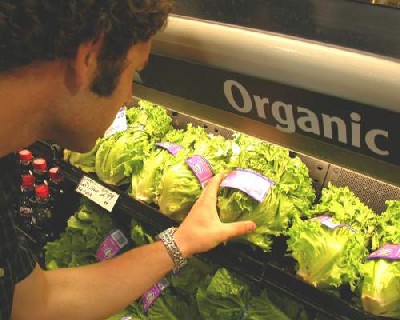 | « Back to article | Print this article |
Ten key trends that will redefine consumer behaviour
Every year, marketing and communication giant JWT surveys the markets around the world to spot the following year's trends. Here's a snapshot of the trends it has spotted for 2012.
In JWT's annual year-end forecast of trends for the near future, continued economic uncertainty, new technology and the idea of shared responsibility are at the centre of or driving many of our trends.
The economy will push brands into opening up more entry points for extremely cost-sensitive consumers as the new normal becomes a prolonged normal in the developed world.
At the same time, tough times will generate an unprecedented entrepreneurialism among the so-called Lost Generation, with today's youth becoming a uniquely resourceful group that creates its own opportunity.
Click NEXT to read more...
Ten key trends that will redefine consumer behaviour
Two years ago we forecast that packaging would become a much bigger environmental issue; this year we believe the next big eco-issue will be the impact of our food choices on the environment, with various stakeholders driving awareness around the topic and rethinking what food is sold and how it's made.
On the tech side, more flat surfaces will become screens, and more screens will be interactive -- touching them, gesturing at them and talking to them will become part of our everyday behaviours.
And as technology makes our individual worlds more personalised and niche -- and narrows the types of content, experiences and people we're exposed to -- greater emphasis will be placed on reintroducing randomness, discovery, inspiration and different points of view into our worlds.
These are the 10 key trends that JWT has identified that will shape or significantly impact consumer behaviour in the near future:
Click NEXT to read more...
Ten key trends that will redefine consumer behaviour
Navigating the new normal: As the new normal becomes a prolonged normal in the hampered developed world, more brands in more categories will open up entry points for extremely cost-sensitive consumers.
Marketers will find new opportunities in creating stripped-down offerings, smaller sizes and otherwise more accessible products and services.
Example: In the US, Heinz is introducing several reduced sizes at a suggested retail price of 99 cents, including a 10-ounce ketchup pouch and a 9-ounce yellow mustard, as well as mini Worcestershire and Heinz 57 sauces.
Click NEXT to read more...
Ten key trends that will redefine consumer behaviour
Live a little: Faced with constant reminders about what to do (exercise more, eat better) and what not to do (smoke, overspend), and fatigued from several years of austerity, consumers will look for ways to live a little without giving up a lot.
People have been exercising more self-control, and increasingly they're looking to let loose once in a while: indulging in sinful things, splurging on treats and escaping from today's many worries. (Example: Whiskey in South Africa, premium beer in the UK and cheap eclairs in India are small indulgences that consumers with little to spend are enjoying.)
Click NEXT to read more...
Ten key trends that will redefine consumer behaviour
Generation go: While twenty somethings in the developed world feel they've been dealt an unfair deck, many are finding opportunity in economic adversity. Out of continued joblessness or discontent with the status quo will spring an unprecedented entrepreneurial mindset, enabled by technology that obliterates traditional barriers to entry.
A so-called Lost Generation will transform itself into a uniquely resourceful cohort. (Example: More than half of Millennials in the U.S. agreed that if they lose or have trouble finding a job, they'll start their own business, according to a JWT survey, up from 25 per cent in 2009.)
Click NEXT to read more...
Ten key trends that will redefine consumer behaviour
The rise of shared value: Rather than simply doling out checks to good causes, some corporations are starting to shift their business models, integrating social issues into their core strategies.
The aim is to create shared value, a concept that reflects the growing belief that generating a profit and achieving social progress are not mutually exclusive goals. (Example: Philips is partnering with the Dutch government in a bid to provide affordable, sustainable energy solutions to some 10 million people across 10 sub-Saharan African nations by 2015.)
Click NEXT to read more...
Ten key trends that will redefine consumer behaviour
Food as the new eco-issue: The environmental impact of our food choices will become a more prominent concern as stakeholders -- brands, governments and activist organisations -- drive awareness around the issue and rethink what food is sold and how it's made.
As more regions battle with food shortages and/or spiking costs, smarter practices around food will join the stable of green "best practices." (Example: UK supermarket Sainsbury's featured a summer promotion in 2011 offering customers who asked for cod, haddock, salmon, tuna and prawns an alternative, more sustainable species such as herring or mackerel for free.)
Click NEXT to read more...
Ten key trends that will redefine consumer behaviour
Marriage optional: A growing cohort of women is taking an alternate life route, one that doesn't include marriage as an essential checkpoint. Both in the West, where this trend is building, and in the East, where it's gaining momentum, "happily ever after" is being redefined as a household of one, cohabiting or single motherhood. (Example: In 2010, a third of Japanese women entering their 30s were single, while 37 per cent of Taiwanese women 30-34 were single.)
Reengineering randomness: As our individual worlds become more personalised and niche -- and the types of content, experiences and people we are exposed to become narrower -- greater emphasis will be placed on reintroducing randomness, discovery, inspiration and different points of view into our worlds. (Example: Airtime, due to launch at the end of 2011, is being touted as a random, real-time video chat platform where strangers will be "smashed together.")
Click NEXT to read more...
Ten key trends that will redefine consumer behaviour
Screened interactions: More flat surfaces are becoming screens, and more screens are becoming interactive. Increasingly we'll be touching them, gesturing at them and talking to them -- and becoming accustomed to doing so as part of our everyday behaviours.
This is opening up novel opportunities to inform, engage and motivate consumers. (Example: In New York, a restaurant at high-end department store Barney's features 30 individual screens in a large communal table that's covered in glass; diners can digitally order their meal, then browse the store's catalogue while eating.)
Click NEXT to read more...
Ten key trends that will redefine consumer behaviour
Celebrating aging: Popular perceptions of aging are changing, with people of all ages taking a more positive view of growing older. And as demographic and cultural changes, along with medical advances, help to shift attitudes, we'll redefine when "old age" occurs and what the term means.
(Example: To appeal to Gen Xers and Boomers, Polish beer brand Z.ywiec launched a campaign with the tagline "The best is ahead of you." Commercials showed older male celebrities, including actors, a boxer and a cartoonist, speaking about their lives, offering insights and advice.)
Click NEXT to read more...
Ten key trends that will redefine consumer behaviour
Objectifying objects: As objects get replaced by digital/virtual counterparts, people are fetishising the physical and the tactile. As a result we'll see more "motivational objects," items that accompany digital property to increase perceived value, and digital tools that enable creation of physical things.
(Example: Sincerely's Postagram apps allow vacationers and others to turn snapshots into snail-mailed postcards. Similarly, Postcard on the Run reminds potential users that for recipients, a physical card is "a real keepsake they can hold close to their heart, put up on the fridge or display at work.")
Click NEXT to read more...
Ten key trends that will redefine consumer behaviour
JWT's trends forecast are the result of quantitative, qualitative and desk research conducted by JWTIntelligence through the year.
Specifically for this report, we conducted quantitative surveys in the US and the UK; we also received input from nearly 70 JWT planners across more than two dozen markets including India.
Trends don't happen in isolation. And many are extensions or outgrowths of trends we formerly spotted; after all, trends with real significance can't be assigned to just one calendar year. These trends, which we believe have significant weight and momentum, indicate shifts that are likely to be with us for a while.
The author is director of trendspotting, JWT.












